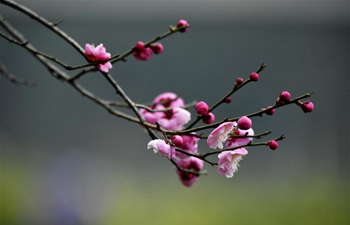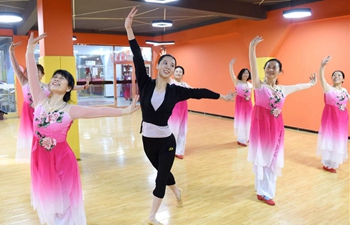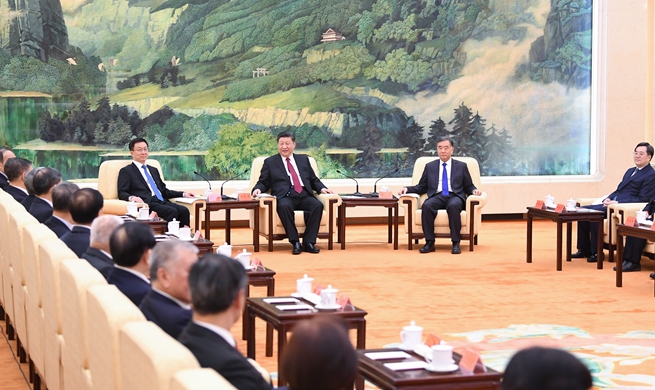by Xinhua writer Qu Junya
BEIJING, Jan. 31 (Xinhua) -- From combating Malaria to cataract surgery, China's medical assistance has proved a big help for poor countries, contributing to the global improvement of public health.
FREE MEDICAL SERVICES FOR 280 MILLION PEOPLE
Since dispatching a medical team to Algeria in 1963, China has sent over 26,000 medical workers on assistance missions abroad, providing free services for some 280 million people around the world, mostly in 69 developing countries in Africa, Asia and Latin America.
The past decades have seen a focus on Africa, where common diseases are poorly detected and insufficiently treated and a high prevalence of epidemics claims more lives largely due to a shortage of medical services and supplies.
Official data last year showed some 21,000 Chinese medical personnel had worked in 48 African countries, dealing with a total of 220 million cases.
The Chinese doctors and nurses do their jobs amid difficulties, including poor equipment, communication problems, and interruptions of water and power supplies sometimes coupled with exposure to extreme weather and deadly viruses.
Jin Donghui, a surgeon from East China's Zhejiang Province, was once in danger of being killed when spending a day working 500 meters away from a terror attack scene in Mali's capital Bamako in November 2015. "I immediately tensed up ... seeing many trucks carrying troops," he recalled.
Since being commissioned in 2008, the naval hospital ship Peace Ark has provided medical services to some 230,000 people in 43 countries in Asia, Africa and Latin America. It returned to China in mid-January after completing its seventh voyage abroad, and sailing 31,800 nautical miles in 205 days, traveling as far as Venezuela and Chile, and treating more than 50,800 cases.
"The Chinese ship's arrival is a blessing," said an Ecuadorian woman called Estela de Rojas. A Chinese medical team removed a gallstone her husband had been suffering from. The operation had been long overdue because the couple lacked money.
MORE THAN MEDICAL SERVICE
Among the tasks of the Chinese medical teams in Africa is raising the local level of medical services. As far as capacity building is concerned, medical technology, equipment and medicine are provided, hospitals and their management systems built, and training programs run in a sustained, long-term approach.
Between 1968 and 2018, Zhejiang sent a total of 1,127 medical workers in 53 batches to the three countries of Mali, the Central African Republic and Namibia. Thanks to their help, local medical staff can now handle the replantation of severed limbs, cerebral aneurysm operations or ultrasound interventional therapy, among others.
During the same period, Beijing sent 51 medical teams, or an estimated 950 personnel, to 11 countries. "We helped build the first intensive care unit in Guinea," said Wang Shouren, who led the 18-month 25th mission to Guinea that began in early 2016.
In Sierra Leone, 225 doctors acquired qualifications in epidemic control and prevention from training courses given by Chinese in 2016, two years after the country lost dozens of its less than 200 registered doctors in an Ebola outbreak.
In recent years, China has supported Africa's effort to build a regional center for disease control and prevention, and tackle public health emergencies, or helped develop pilot projects to improve maternal and child health in countries like Ethiopia and Malawi.
The moves also marked strengthened China-Africa cooperation in promoting public health, one of the 10 priorities listed at the 2015 Johannesburg Summit of the Forum on China-Africa Cooperation (FOCAC). At the last triennial summit held in Beijing in 2018, China reaffirmed its commitment, pledging to upgrade and optimize 50 medical assistance projects.
COMBATING EPIDEMICS
China has launched joint projects in Africa to enhance "its practices in the prevention and control of malaria and schistosomiasis," Ma Xiaowei, head of China's National Health Commission, told the 71st World Health Assembly held in May 2018.
"We have more than 200 million cases of malaria a year and more than 90 percent of them are in Africa, so the focus on Africa is important," World Health Organization (WHO) Director-General Tedros Adhanom Ghebreyesus has said.
Malaria is a mosquito-borne epidemic that kills about half a million people a year globally, or a child every two minutes in Comoros, an archipelago state in the Indian Ocean. Thanks to a China-backed project since 2007, Comoros is now hopeful of eliminating malaria on the main three islands by 2020.
With the help of an effective drug and an innovative approach, both invented by Chinese, Comoros has achieved a 98 percent decrease in cases, from over 100,000 to 1,300 annually. "In Anjouan and Moheli there is no malaria now ... There are still a few cases in Grande Comore," said local doctor Layar Idoine.
"During my childhood, I knew many friends killed by the mosquito-borne disease," said 51-year-old Nassurddine Houssen, who still remembered that mosquito coils had long been a source of financial concern to his parents.
In 2014, China offered aid and sent over 1,200 medical workers and public health experts to help Africa to contain a severe outbreak of Ebola, which WHO data showed caused over 7,300 deaths in the worst-hit countries of Guinea, Liberia and Sierra Leone in the first 10 months.
WHO Global Malaria Program Director Pedro Alonso has said, "China is playing a major leadership role in the global health agenda. It is a strong, economically powerful country with a vision to contributing to the fight against malaria and generally in the improvement of health beyond its own borders."
HOPEFUL JOURNEY
Ousman Nijie was among the 206 patients receiving free cataract surgery from Dec. 19 to 28 at an eye care center in Gambia's capital Banjul. Being grateful for ending his 15-month affliction from blindness, he wrote: "I was not able to work to earn money to support my wife and three children. Thanks to the Chinese doctors, we have hope again in life."
The operations by Chinese doctors have been part of the Bright Journey program funded by the Chinese government since 2014. The program has helped some 4,000 people in more than 10 African countries to regain their sight, and it is among the highlights on the agenda of China-Africa public health cooperation.
Elsewhere in the world, the Chinese medical assistance program is also warmly welcomed. In Asia's Laos for instance, the mission in late 2017 benefited 300 patients, and was soon followed by two others in May and August 2018.

















